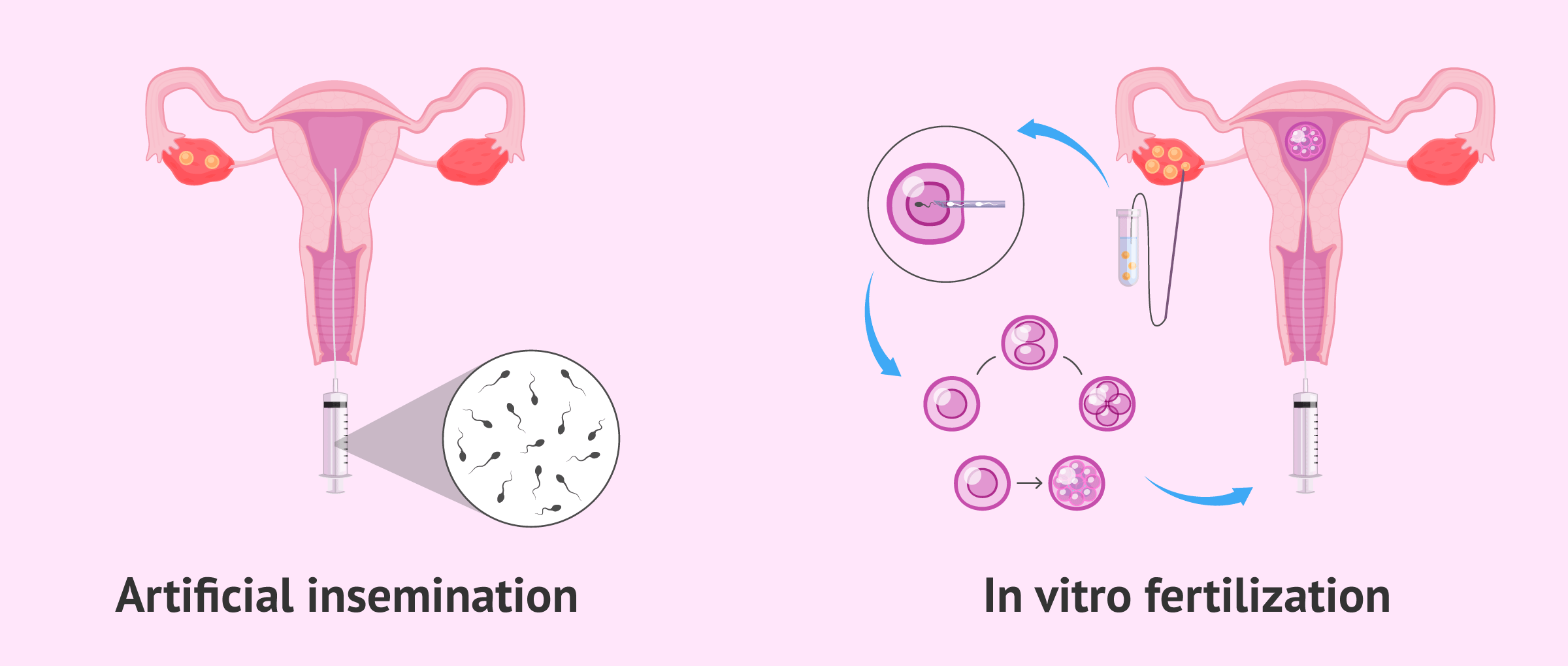
Assisted Reproductive Techniques (ART) have revolutionized the field of reproductive medicine, offering a glimmer of hope to millions of couples struggling with infertility. These innovative procedures have provided new avenues for couples to conceive and start a family. From in vitro fertilization to intracytoplasmic sperm injection, ART encompasses a range of cutting-edge techniques that have significantly improved the success rates of pregnancy for those facing fertility challenges.
In this article, we will delve into 14 fascinating facts about Assisted Reproductive Techniques. Whether you are just curious about the advancements in reproductive medicine or are considering ART as an option for your own fertility journey, these facts will provide valuable insights into this rapidly evolving field. So, let’s explore the incredible world of ART and discover how science and technology are reshaping the possibilities of parenthood.
Key Takeaways:
- Assisted reproductive techniques have helped 8 million babies be born, offering hope to couples facing fertility challenges and opening up opportunities for LGBTQ+ individuals and couples to start families.
- While assisted reproductive techniques bring hope, they can be emotionally challenging and financially demanding. It’s important to consider ethical and legal aspects while pursuing these options.
The first successful IVF birth occurred in 1978.
In 1978, the world witnessed the birth of Louise Brown, the first baby conceived through in vitro fertilization (IVF). This groundbreaking achievement by Robert Edwards and Patrick Steptoe marked the beginning of a new era in reproductive medicine.
Approximately 8 million babies have been born through assisted reproductive techniques.
Since the birth of Louise Brown, the number of babies conceived through assisted reproductive techniques has steadily increased. Today, it is estimated that around 8 million babies worldwide owe their existence to these technologies, bringing joy and hope to countless individuals and couples facing fertility challenges.
Assisted reproductive techniques offer solutions for various fertility issues.
Assisted reproductive techniques, such as IVF, ICSI, and donor insemination, provide viable solutions for a range of fertility issues. These techniques are particularly beneficial for couples with infertility due to factors like low sperm count, blocked fallopian tubes, advanced maternal age, or unexplained infertility.
Sperm and egg donation play a crucial role in assisted reproductive techniques.
For those unable to produce viable sperm or eggs, sperm and egg donation opens up new possibilities. Donors undergo rigorous screening processes to ensure the health and genetic quality of the donated gametes, giving hope to individuals and couples eager to build a family.
Assisted reproductive techniques have evolved significantly over the years.
Since the birth of IVF, advancements in technology and scientific knowledge have revolutionized assisted reproductive techniques. Innovations such as intracytoplasmic sperm injection (ICSI), preimplantation genetic testing (PGT), and frozen embryo transfer (FET) have enhanced success rates and expanded options for individuals and couples pursuing fertility treatments.
Assisted reproductive techniques can be emotionally challenging.
While assisted reproductive techniques offer hope, the journey can be emotionally challenging. The ups and downs of fertility treatments can take a toll on individuals and couples, requiring resilience, support, and understanding throughout the process.
The success rates of assisted reproductive techniques vary.
Success rates for assisted reproductive techniques can vary depending on factors such as age, underlying fertility issues, and the quality of the gametes involved. It’s important for individuals and couples to have realistic expectations and consult with fertility specialists to understand their chances of success.
Assisted reproductive techniques have opened up opportunities for LGBTQ+ individuals and couples.
Assisted reproductive techniques have played a crucial role in enabling LGBTQ+ individuals and couples to fulfill their dreams of becoming parents. Same-sex couples and individuals can utilize techniques like donor insemination or surrogacy to start a family and experience the joys of parenthood.
Assisted reproductive techniques come with ethical considerations.
The advancements in assisted reproductive techniques have sparked ethical discussions surrounding issues like embryo selection, genetic manipulation, and the commodification of gametes. Ensuring proper regulation and ethical practices are vital to balance the benefits of these techniques with ethical considerations.
Assisted reproductive techniques require a multidisciplinary approach.
Successful implementation of assisted reproductive techniques necessitates collaboration among various healthcare professionals, including fertility specialists, embryologists, nurses, psychologists, and support staff. This multidisciplinary approach ensures that individuals and couples receive comprehensive and personalized care throughout their fertility journey.
Assisted reproductive techniques can be financially demanding.
While assisted reproductive techniques offer hope, it’s important to acknowledge that these treatments can be financially demanding. Costs associated with fertility medications, procedures, and multiple attempts can add up, and individuals and couples should be prepared for the financial implications of pursuing these options.
Assisted reproductive techniques have contributed to advances in fertility preservation.
Techniques like egg freezing, sperm freezing, and embryo freezing have emerged as valuable options for fertility preservation. Assisted reproductive techniques have empowered individuals to proactively preserve their fertility for various reasons, such as medical treatments or personal choices.
Legal considerations surround assisted reproductive techniques.
Assisted reproductive techniques come with legal considerations, including laws and regulations surrounding gamete donation, surrogacy agreements, and parental rights. Consulting with legal professionals familiar with reproductive law is essential for individuals and couples pursuing these techniques to ensure legal protection and clarity.
Assisted reproductive techniques continue to advance with ongoing research.
Ongoing research in the field of assisted reproductive techniques aims to further improve success rates, enhance embryo selection methods, refine laboratory techniques, and address potential risks associated with these treatments. The commitment to advancement ensures that individuals and couples have access to the most effective and safe treatment options.
Conclusion
In conclusion, assisted reproductive techniques have revolutionized the field of reproductive medicine. They have provided hope and opportunity for couples struggling with infertility to achieve their dreams of starting a family. The advancements in technology and the dedication of scientists and medical professionals have made these techniques safer, more effective, and more accessible.
Through procedures such as IVF, ICSI, and egg freezing, couples can now overcome various fertility challenges and increase their chances of conceiving. These techniques not only offer solutions for couples struggling with infertility but also provide options for single individuals, same-sex couples, and individuals with genetic disorders. As research and technology continue to advance, we can expect even more remarkable breakthroughs in the field of assisted reproductive techniques.
If you or someone you know is considering assisted reproductive techniques, it is important to consult with a qualified medical professional who can provide personalized guidance and support throughout the process. With the right guidance and resources, assisted reproductive techniques can be a viable option for building the family you’ve always dreamed of.
FAQs
Q: How successful are assisted reproductive techniques?
A: The success rates of assisted reproductive techniques vary depending on several factors such as the age of the woman, the underlying cause of infertility, and the specific technique used. On average, the success rate of in vitro fertilization (IVF) ranges from 40% to 50% per cycle, but this can increase with multiple cycles.
Q: Are assisted reproductive techniques safe?
A: Assisted reproductive techniques have been practiced for several decades and are generally considered safe. However, like any medical procedure, they come with some risks such as multiple pregnancies, ovarian hyperstimulation syndrome, and ectopic pregnancies. It is important to discuss the potential risks and benefits with your doctor before proceeding with any assisted reproductive technique.
Q: Are assisted reproductive techniques affordable?
A: The cost of assisted reproductive techniques can vary widely depending on the country, clinic, and specific technique used. In general, these procedures can be quite expensive, with costs ranging from a few thousand to tens of thousands of dollars. It is important to research potential financial assistance programs, insurance coverage options, and explore affordable alternatives with your doctor.
Q: How long does the process of assisted reproductive techniques take?
A: The duration of the process can vary depending on factors such as the specific technique used and individual circumstances. Generally, it can take several weeks to a few months, as it involves fertility evaluations, hormonal stimulation, egg retrieval, fertilization, and embryo transfer. Your doctor will provide you with a personalized timeline based on your unique situation.
Q: Are there any lifestyle changes required for successful assisted reproductive techniques?
A: While the success of assisted reproductive techniques primarily depends on medical interventions, making certain lifestyle changes can positively impact the overall outcome. This may include maintaining a healthy weight, avoiding smoking and excessive alcohol consumption, managing stress levels, and following a balanced diet and regular exercise routine.
Assisted reproductive techniques have revolutionized the lives of countless individuals and couples facing fertility challenges. These fascinating facts highlight the incredible advancements in this field, from the first successful IVF birth to the millions of babies born through these techniques. As you've learned about the emotional, financial, and legal aspects of assisted reproductive techniques, you may be curious to explore more about specific procedures like IVF. Continue your journey of discovery and uncover even more remarkable facts about the world of assisted reproduction.
Was this page helpful?
Our commitment to delivering trustworthy and engaging content is at the heart of what we do. Each fact on our site is contributed by real users like you, bringing a wealth of diverse insights and information. To ensure the highest standards of accuracy and reliability, our dedicated editors meticulously review each submission. This process guarantees that the facts we share are not only fascinating but also credible. Trust in our commitment to quality and authenticity as you explore and learn with us.


